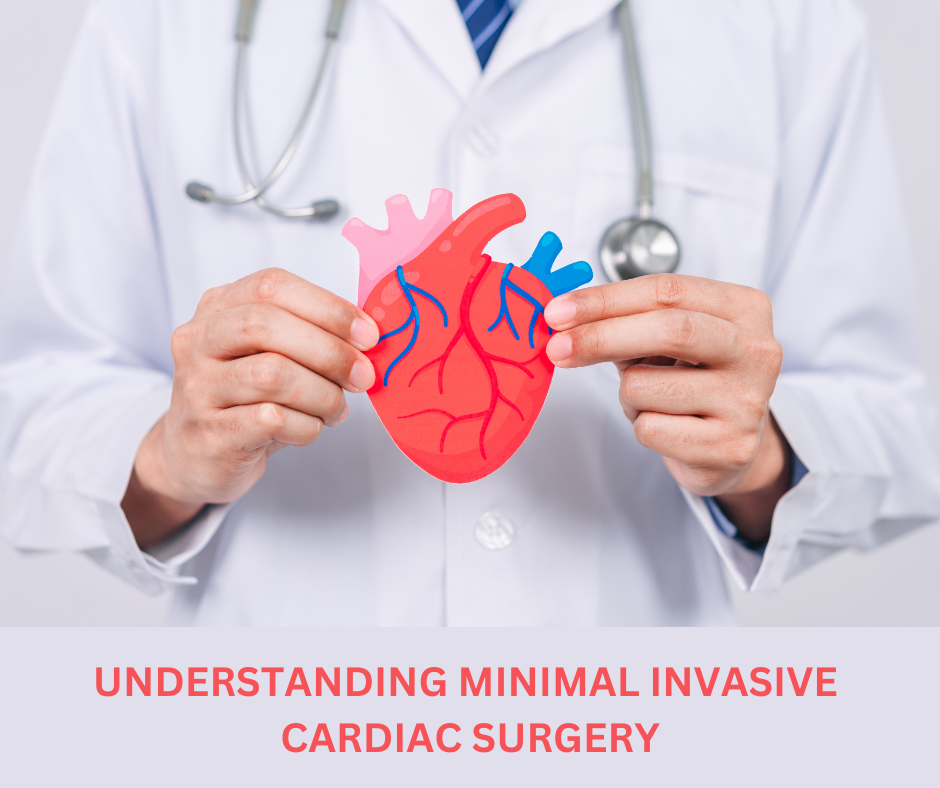Understanding Minimal Invasive Cardiac Surgery

Minimal invasive cardiac surgery (MICS) represents a significant advancement in heart surgery techniques, offering patients a safer and more comfortable alternative to traditional cardiac surgery. This article explores the nuances of MICS, its advantages, and the scenarios where it’s best applied. If you’re searching for the best minimal invasive cardiac surgeon in Delhi or the best minimal invasive heart surgeon anywhere, understanding this technique is crucial.
What is Minimal Invasive Cardiac Surgery?
Minimal invasive cardiac surgery is a specialized form of heart surgery performed through a small incision, typically five to six centimeters, on the left or right side of the chest. Unlike traditional cardiac surgery, where the breastbone or sternum is cut open to access the heart, MICS avoids cutting the sternum. The internal surgical steps remain largely the same, but the approach differs, leading to several benefits.
Key Differences Between Traditional and Minimal Invasive Cardiac Surgery
One of the main distinctions between traditional cardiac surgery and MICS is the lack of sternum cutting in the latter. This difference significantly impacts the patient’s recovery and overall experience:
- Reduced Blood Loss: In traditional surgery, the act of cutting the sternum can lead to significant blood loss. The bone cut ends continue to bleed during the procedure. In contrast, MICS involves minimal blood loss, reducing the need for blood transfusions.
- Lower Risk of Infection: Bone cuts are a common source of post-surgery infections. Since MICS avoids cutting the bone, the risk of wound infections is considerably lower.
- Less Pain and Faster Recovery: Much of the pain associated with traditional cardiac surgery stems from the cutting of the sternum. MICS, by avoiding this, results in significantly less pain. Patients experience a quicker recovery, as there’s no need for the extensive precautions that accompany traditional surgery, such as avoiding weight lifting or wearing a binder.
The Gold Standard: Traditional Cardiac Surgery
Traditional cardiac surgery, despite the advancements in MICS, remains the gold standard. This method has been tried and tested over decades, with millions of successful cases. It is a versatile technique that can be applied to nearly every patient, regardless of their condition. This universality is why it’s still considered the benchmark in cardiac care.
When is Minimal Invasive Cardiac Surgery Suitable?
While MICS offers numerous benefits, it’s not suitable for every patient. The technique is best for those who meet specific criteria:
- Good Heart and Lung Function: Patients with strong heart and lung functions are ideal candidates. Those with poor heart function or compromised lung capacity may not tolerate the special anesthesia required for MICS, which involves single lung ventilation.
- Appropriate Anatomy: The chest wall anatomy and the position of the heart chambers relative to the chest wall are crucial factors. A CT scan often helps in assessing whether a patient is suitable for MICS.
- No Recent Heart Attack: Patients who have recently suffered a heart attack or have severely diseased or calcified vessels may not be suitable candidates for MICS.
Traditional vs. Minimal Invasive Cardiac Surgery: Which is Better?
It’s essential to understand that one technique isn’t inherently superior to the other. Traditional cardiac surgery has a long history of success, while MICS offers benefits to those who qualify. However, MICS cannot be performed on every patient due to its specific requirements.
The decision between traditional surgery and MICS should be made by a qualified cardiac surgeon who can evaluate the patient’s unique condition, including heart function, lung capacity, and overall health.
Conclusion
Both traditional and minimal invasive cardiac surgeries are safe and effective, but they serve different patient needs. The best minimal invasive heart surgeon will help you determine the most suitable approach for your specific case, ensuring the best possible outcome for your heart health. If you’re in Delhi, seeking out the best minimal cardiac surgeon in Delhi could be your first step towards a quicker, less painful recovery.
